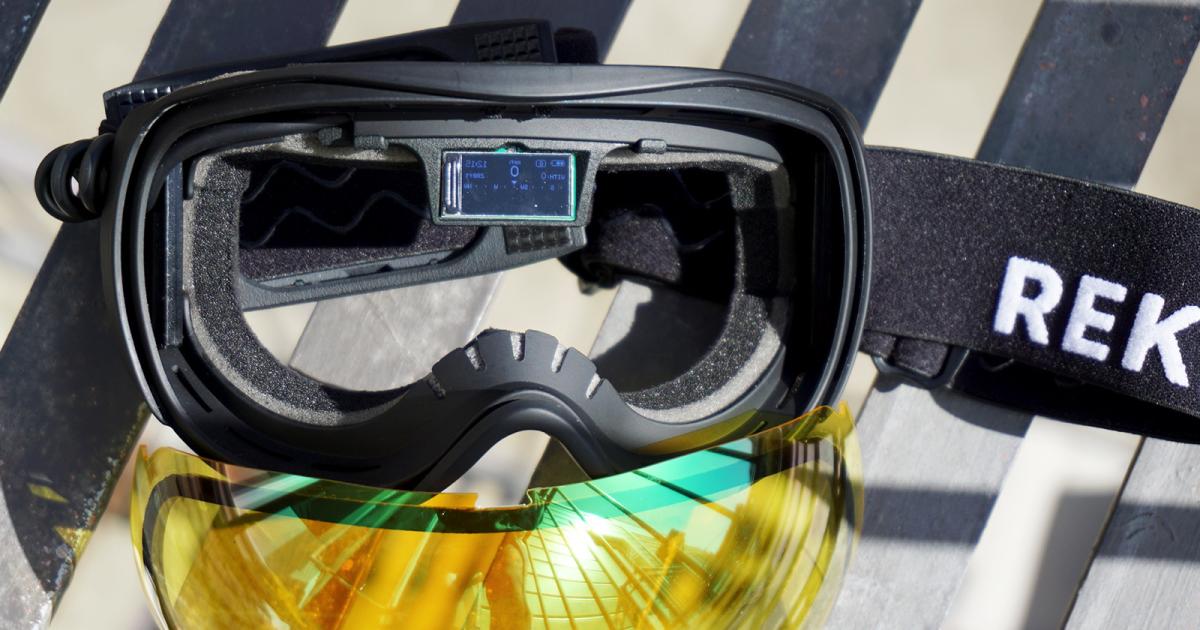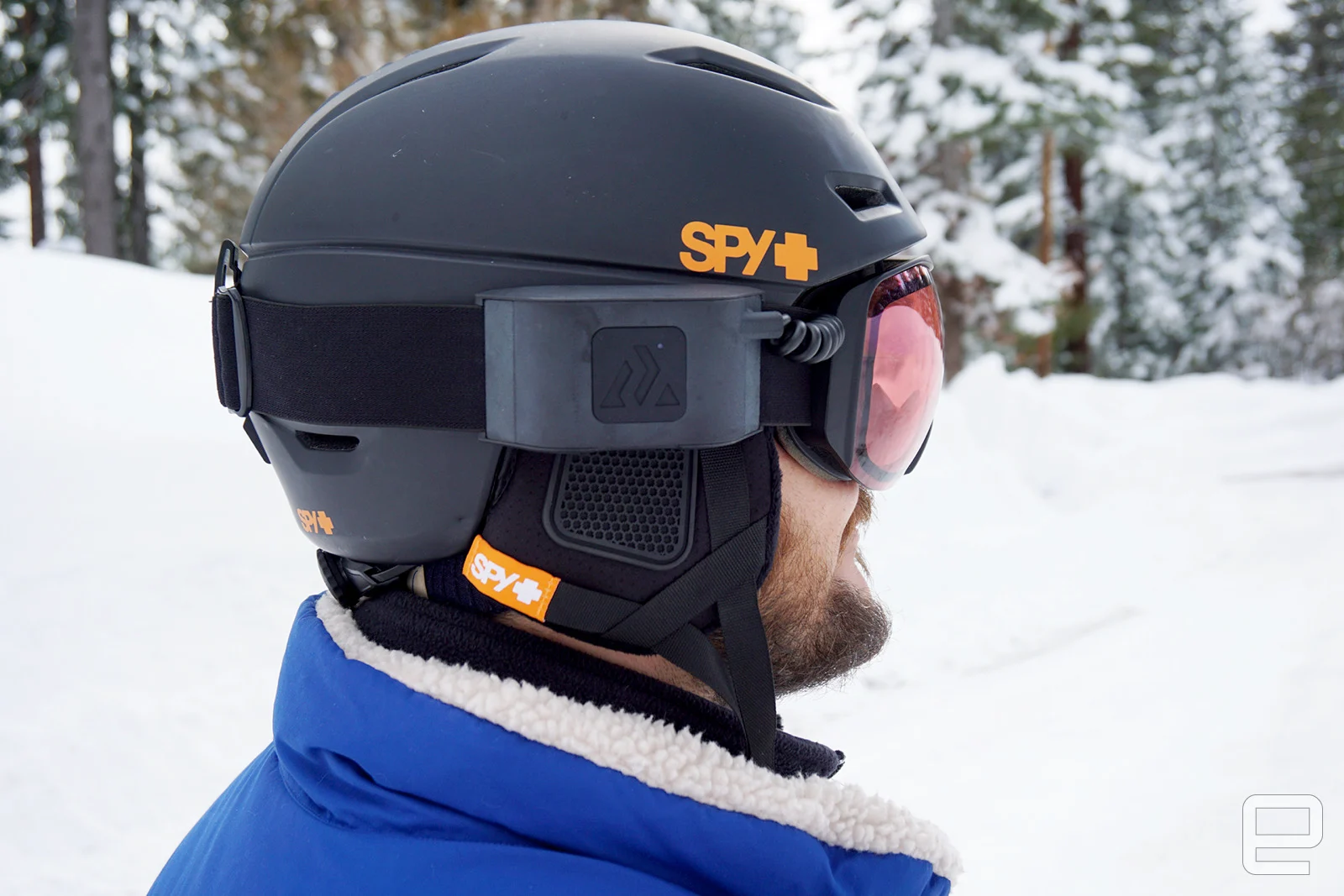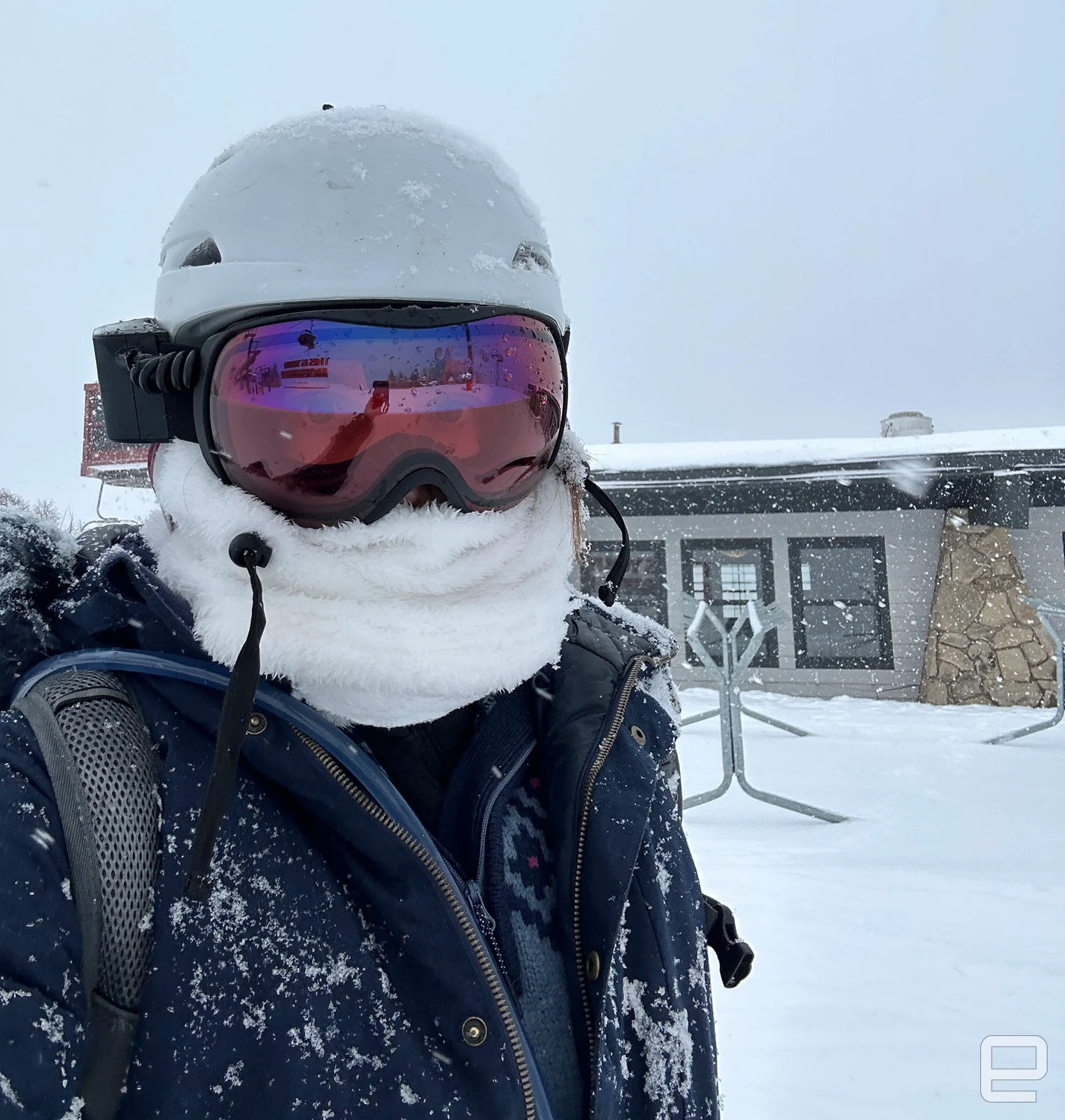
All products recommended by Engadget are selected by our editorial team, independent of our parent company. Some of our stories include affiliate links. If you buy something through one of these links, we may earn an affiliate commission. All prices are correct at the time of publishing.
I’ve been excited about the prospect of augmented reality on ski goggles since Oakley first tried it more than a decade ago with its short-lived Airwave headset. Unfortunately, its foray into AR left a lot to be desired: the Airwave was comically large and required a wrist-worn controller. Plus, at around $600, they were prohibitively expensive for what felt like an experimental product.
But display tech has evolved a lot since then. And I’ve been patiently waiting for another company to come along with a better version that actually works. So I was excited to discover Rekkie, an independent manufacturer that launched its first pair of goggles with a built-in heads-up display last year.
At $349, Rekkie’s offering is still pricey, but much closer to what you’d pay for high-end, non-smart ski goggles. More importantly, after several days snowboarding with Rekkie’s goggles, I’ve found that AR has advanced enough that headsets like this finally feel useful.
The goggles
At first glance, Rekkies almost look like a pair of standard ski goggles. The most noticeable difference, though, is a box on the right side of the strap that holds the power supply, as well as the Bluetooth and long distance radios. On the outside of the pack is a button for navigating the goggles’ interface.
At about 4 inches long and an inch thick, the pack is extremely bulky, and it’s one of the few drawbacks of using the goggles. Weighing 253 grams, the Rekkies are more than twice as heavy as my usual pair, but didn’t feel like much when I wore a helmet. And, if your helmet is black, it may even (sort of) blend in. But if your headgear is white or light colored it will stick out. Practically, this doesn’t matter much, but it does look a bit silly. It also means you can’t wear the goggles under your helmet, if that’s your preference. Neither of these was a dealbreaker for me, though, and I found I could easily hide the battery pack with an over-helmet mask.
Karissa Bell / Engadget
But the aesthetic drawbacks are vastly outweighed by what the Rekkie goggles can do. Their signature feature is a dashboard that shows your current elevation, speed and a compass. If you’re skiing with friends who also have a pair, you can see how far away they are and use the accompanying app to view their location on the mountain. The goggles can also control music and show your notifications and daily stats.
The actual display is a small, roughly 1-inch panel that sits in the middle of the frames near the bridge of your nose. This setup means you can swap out the lenses for varying light conditions (a silver set is included, and the company sells additional colors). But Rekkie’s lenses are slightly different from those made by other goggle companies. The upper third of each lens has a reflective coating on the inside in order to make the display more visible.
This means that if you look up, towards the display, the lenses are darker than when you’re looking straight ahead. The difference didn’t bother me, but some people might find it distracting. Rekkie said it is considering tweaks that would make the effect more subtle.

Karissa Bell / Engadget
More importantly, I found that the screen was easy to see in almost all lighting conditions. The dashboard and menus were clearly visible in bright sunlight and on cloudier days. The display is also positioned in such a way that it’s not directly in your line of sight when you’re cruising down the mountain so the overlays aren’t distracting.
All that may sound complicated, but the interface is extremely easy to navigate. Tap and hold the side button on the battery pack to bring up the main menu, then glance up, down, left or right to select a function. Up is your stats, where you can view how many runs you’ve done and how much elevation you’ve covered. Left is “texts,” which is a bit of a misnomer because it shows recent notifications from all apps (on iOS, you need to have notification previews enabled); right is “music” for controlling media playback, and down is the live dashboard. From the latter, you can also tap the button to hide everything but the time.
I tended to switch to this “clock-only” mode often, especially once I gained some speed. It might sound weird, but the clock was one of my favorite features. I don’t wear a watch, and repeatedly checking your phone on a cold day can quickly take a toll on its battery (and your fingers).
Likewise, being able to control my music and podcasts from the goggles was very useful. I usually wear AirPods while I board, and reaching under my helmet or stupidly shouting “Hey Siri” into my ski mask always gives me a bit of anxiety. So I was more than happy to be able to rely on my goggles for those tasks.
As much as I’ve complained about the size of the battery pack, the goggles’ runtime is actually impressive. The company says the device should last about 10 hours, though it could go longer depending on how heavily you’re using it. I never managed to drain the battery during a full day of snowboarding, even in snowy 10-degree (Fahrenheit) conditions. The goggles even lasted two consecutive days without charging.

Karissa Bell / Engadget
I was initially concerned that the uncovered charging port on the underside of the battery pack would leave it exposed to the elements. I boarded in more than one storm with heavy snowfall where no part of the goggles was able to stay perfectly dry, and wondered if I might be inadvertently damaging them. But it turns out the device was more water resistant than I had anticipated.
Rekkie said the goggles aren’t technically waterproof, but were designed to withstand the kind of moisture you’d expect to encounter during a typical day of skiing. I (unintentionally) put this to the test one stormy day in Park City when I managed to fill the Rekkies with snow after I went down in a pile of powder. Snow froze to the display and they were temporarily unusable. But I dried them out at the end of the day and was able to charge them like nothing had happened.
Friend tracking
Rekkie’s googles get even more useful if you ski with a friend who also has them. Once you form a “group” within the app, you’ll be able to see how far away you are from each other. There’s no limit to how many people can be in a group, but the dashboard will only show the two who are closest to you (though you can view everyone from the app). You can also compare stats with your group from the stats menu in the goggles.
The system uses your phone’s cellular signal and the goggles’ onboard radios to track each other. That means that if you have service, you can see how far away they are in both the dashboard view and the Rekkie app. If one or both people don’t have service, the device’s radios have an approximately 2,000-foot range, so you should be able to see if someone is on the same run as you, but not if they’re, say, on the other side of the resort.
In practice, I found the friend-tracking feature most useful when my husband, who also was wearing a pair, was on the same trail as me. I tend to race down runs much faster than he does, so we often lose sight of each other. Seeing the number tick down as he approached was both reassuring and good for my impatience.
I could see the feature being even more helpful if you go off-piste or into the backcountry. It’s easier to lose friends in the trees, so having an idea of how far away they are could help make sure no one is left behind.
But while the app is useful for seeing your friends’ locations, it unfortunately doesn’t do much else. For example, there’s no way to use the app to check out the stats your googles tracked while you were on the mountain. As a longtime user of ski-tracking apps like Slopes, which map out all your runs and record your statistics throughout the day, I’m bummed Rekkie doesn’t offer this.
Gallery: Rekkie Smart Snow Goggles Review | 4 Photos
Gallery: Rekkie Smart Snow Goggles Review | 4 Photos
The founders told me that there are plans to incorporate stats into the app, as well as several other capabilities. They’re also working on new safety features, like one that will automatically switch off the live dashboard once you hit speeds of 15mph or faster, as well as ways to communicate with resorts’ ski patrols if you get into trouble.
New features will be available via app and firmware updates, so if you buy a pair now, there’s a good chance you’ll see their capabilities expand over time. That’s a good thing when you’re investing $350 in eyewear you’ll only use a few months of the year.
Overall, I was impressed by just how useful the Rekkies are. While I was initially excited for a pair of goggles that could track my stats and project my real-time speed and location, I underestimated the added convenience of features like friend tracking, media controls and an always-on clock. We’re at a moment when a lot of big tech companies have made ambitious promises about the future of augmented reality. But those promises, like the all-encompassing augmented reality glasses Meta and others have hinted at, are likely still years away. Rekkie’s smart goggles may be a more niche product, but they show that we don’t need to wait years for useful, non-gimmicky applications for AR.














